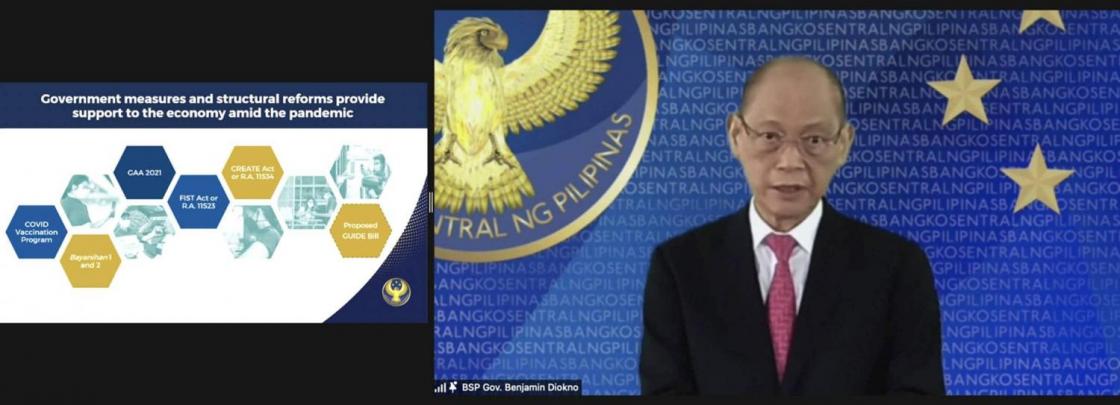
The Bangko Sentral ng Pilipinas (BSP) is pushing for offline digital payment solutions for transactions not requiring internet connection to be able to bring financial services and products to off-grid areas.
“Digital solutions are being pursued to enable e-payments even without internet connection, or what we call offline e-payments. This initiative is being explored as a potential solution for improved financial access particularly in hard- to-reach rural areas,” said BSP Governor Benjamin E. Diokno.
Diokno said on Tuesday, Nov. 30, that they will adopt offline payments alongside efforts to improve a more effective and reliable internet connectivity. He reiterated this during a recent virtual conference held by the Philippine Economic Society.
Offline payment transactions are included under the BSP’s Digital Payments Transformation Roadmap which will convert 50 percent of the volume of retail payments into digital form by 2023, as well as onboard 70 percent of Filipino adults to the formal financial system.
The BSP has supported expanding the provision of internet service through satellite services to promote financial inclusion and digital finance for banks and financial technology or fintech companies. This was approved last Sep. 28 via an executive order.
The BSP expects the expanded access to satellite services will improve the internet connectivity for the unserved, underserved, and geographically isolated and disadvantaged areas or communities.
Banks with their own satellites will be able to reach the unserved and underserved areas via digital financial services and improve remittances, bills payments and the opening of transaction accounts.
Based on the BSP’s 2019 Financial Inclusion Survey, internet access penetration is uneven in the Philippines, with 60 percent in Luzon, 40 percent in the Visayas, and 30 percent in Mindanao.
In the meantime, digital payment transactions continued to expand as a result of movement restrictions caused by the COVID-19 crisis.
By end 2020, e-payments accounted for 20.1 percent of total payments in the country, slightly higher than the central bank’s 20 percent target for the period, driven by the growth in payments to merchants (P2M) and person-to-person (P2P) payments. This means that one out of five retail payments in the country was transacted digitally last year.
The 20.1 percent share of digital payments to total transactions was up 10 percentage points when compared to 10 percent in 2018. It was also higher than the nine percentage point rise posted during the five-year period of 2013 to 2018. In 2013, only one percent of transactions were in e-payments.
At the end of 2020, the share of digital payments to total value of transactions increased to 26.8 percent or P1.67 billion. The key drivers were merchant payments, P2P payments and government-to-people (G2P) salaries and payroll.
The P2M grew by 47.8 percent year-on-year in 2020 to some 773 million transactions, while P2P payments went up by by 18.1 to 42 million transactions. The G2P’s 15 million transactions was a record 100 percent increase as the payment of salaries to government employees was fully digitalized by the end of 2020.
 Philippine Economic Society (PES)
Philippine Economic Society (PES)